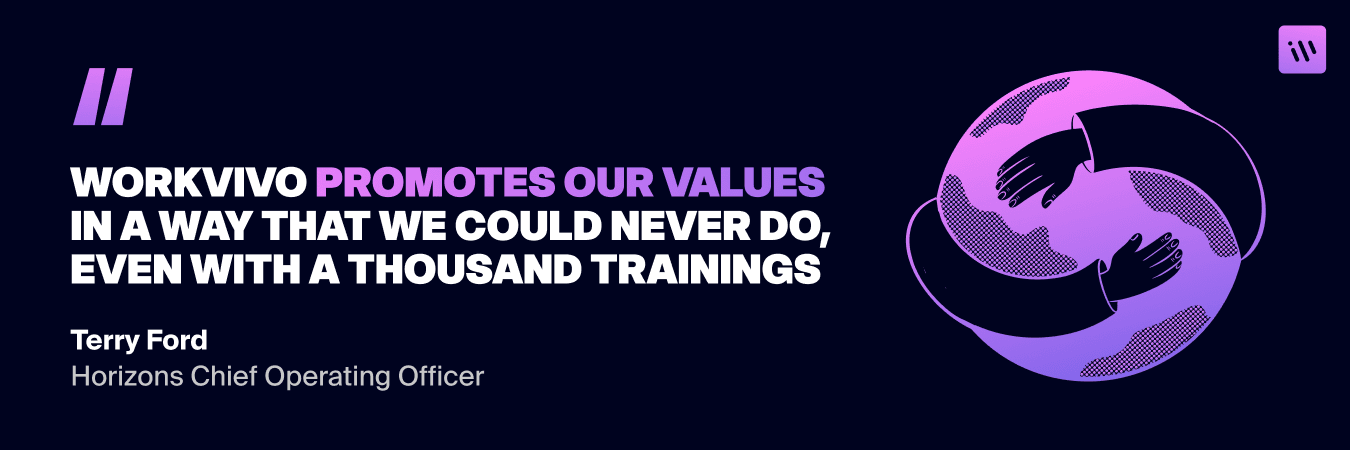Learn from 5,000+ comms leaders on exec buy-in, engagement, and the ROI puzzle.
How To Engage People Working in The Social Impact Sector

Caitlin Kirwan
External Contributor - Internal Comms & Engagement Expert
June 26 2025

We already know that an engaged workforce can have a monumentally positive impact on company performance. But it’s about even more than just performance and profits when it comes to employee engagement in the social impact sector. Even the smallest shift in engagement can significantly amplify the organization’s impact, whether by saving lives or driving meaningful global change. There’s so much at stake.
The social impact sector is made up of a range of different organizations that set out to address social or environmental issues, such as nonprofits, NGOs, and social enterprises. And for a sector powered by people driven by purpose, it’s no surprise that engagement and retention are at the top of the HR priority list. People who are disengaged or disconnected simply can’t drive engaging or connected missions.
This blog post explores why engagement is so important for the sector, and considers the key strategies to improve it. Let’s go!
Why workforce engagement matters even more in the social impact sector
The social impact sector operates in a unique context where employee engagement and mission alignment are notably more important than in many other sectors. Research shows us that such a reliance on engagement comes from three main reasons –
Firstly, motivation:
The need for purpose-driven work is often a more important motivator for nonprofit employees than pay and benefits, meaning clear direction and impact will drive engagement.
Salaries in the social impact sector are not always as competitive as the private or public sectors, so it’s not too surprising that employees need to be more purpose-driven than financially-driven to thrive in a nonproft. Studies have also found that people who work for a nonprofit tend to have a different orientation towards work, driven by purpose and mission rather than pay, benefits or even personal development. And, importantly, engagement amplifies the emotional investment, which, ultimately, increases motivation.
Secondly, organizations in the social impact sector often have incredibly diverse workforces, comprising a wide range of people across paid, voluntary, and consultancy roles. The complex nature of these workforces creates a melting pot of different experiences, backgrounds, expectations, and motivators. Now, don’t get me wrong – workforce diversity is a very good thing, linked to notably better business outcomes. But research has also highlighted that conflict can occur between paid and voluntary staff when communication is unclear and engagement is low.
When engaged effectively, volunteers augment an organization’s financial and in-kind resources, producing greater value for each dollar invested
Impact is created from all angles in nonprofit organizations, so it’s important that engagement is considered across all different groups of paid and unpaid teams who make up the workforce.
The final reason is burnout and staff turnover:
Employees and volunteers working in nonprofit organizations are shown to be particularly susceptible to both burnout and above-average rates of staff turnover. In a country-wide survey from the National Council of Nonprofits in the US, more than 50% of nonprofits said stress and burnout were a reason for workforce shortages. This could perhaps be because of long hours, lower salaries, budget-related stressors, or compassion fatigue.
Whatever the reasons, employee engagement is clearly linked to a lower likelihood of both burnout and staff turnover, building a clear business case for cultivating a positive environment that forms connection.
Key strategies to boost engagement in nonprofits and NGOs
There is one key thing between the most and least engaged teams in the social impact sector: connection.
Connection to the mission, connection to the organization, and connection to people.
Organizations in the social impact sector need to be able to effectively cultivate these connections to have a thriving workforce, a strong culture, and achieve their mission. Because connection is a clear driver of engagement, which is more important than ever for nonprofits and NGOs. Let’s look at what we can do to encourage connection to the mission, the organization, and colleagues.
Connection to the mission
Connecting employees and volunteers to the organization’s mission is one of the most valuable drivers of engagement in the social impact sector. Purpose-led individuals need to understand ‘the why’ behind what they’re doing, and they need to see how it’s making a difference.
Alignment is key, and we need to ensure we’re communicating in a way that links everything back to the bigger picture. Practical things like tagging posts to highlight the connection between daily messaging and the wider mission can be really powerful, as well as amplifying content and messaging from teams of volunteers who are making an impact on the ground.
Connection to the organization
Organizational pride is incredibly important for people working for nonprofits and NGOs. To be truly engaged with both their work and the organizations, employees and volunteers alike need to feel a strong sense of connection and alignment.
Openly communicating the organization’s strategy, goals and vision is a vital part of building organizational pride. As are transparent leader messaging, channels that enable two-way communication, and a strong employer brand.
Connection to people
Last but by no means least, it all comes down to the people who are working and volunteering for the organization. Feeling well-connected is a core driver of engagement for those in the social impact sector. People who feel a sense of community within their organization are generally more engaged, motivated, and productive. They often have higher morale, and are less likely to look externally for their next opportunity.
Events and activities that help bring the entire workforce together go a long way in sparking connection and community, and breaking down any barriers between paid and voluntary teams. For geographically dispersed teams, online community spaces are a great way to connect people from different departments or locations over shared interests.
Workvivo for Good
Workvivo is the world’s leading employee experience platform, helping organizations around the globe engage their people. We’re proud to support purpose-driven teams by strengthening connection and culture so they can do their best work and drive meaningful impact.
Through our Workvivo for Good program, we’re proud to offer a 50% discount to all qualifying nonprofits and free implementation via our accredited partners. We know resources are often limited, so we want to make it easier for mission-driven teams to access our platform, just like Horizons.

Horizons is a US-based nonprofit that enhances the lives of people with intellectual and developmental disabilities by providing services such as summer camps, supported employment opportunities, and educational services. The organization migrated from Meta Workplace to Workvivo as part of the Workvivo for Good program in October 2024.
“We’re very appreciative of Workvivo,” Terry Ford, Chief Operating Officer at Horizons, says. “We’re an agency that truly walks the walk when it comes to our positive values. We do the work. Workvivo allows us to show our entire agency those positive things that are happening.
“The posts, videos, and images that we share on the platform allow us to learn from each other, and train new staff – it all demonstrates the positive practices we want everyone to know about.”
If you’d like to learn more about Workvivo or enquire about your organization’s eligibility for the Workvivo for Good program, we would love to chat with you!
